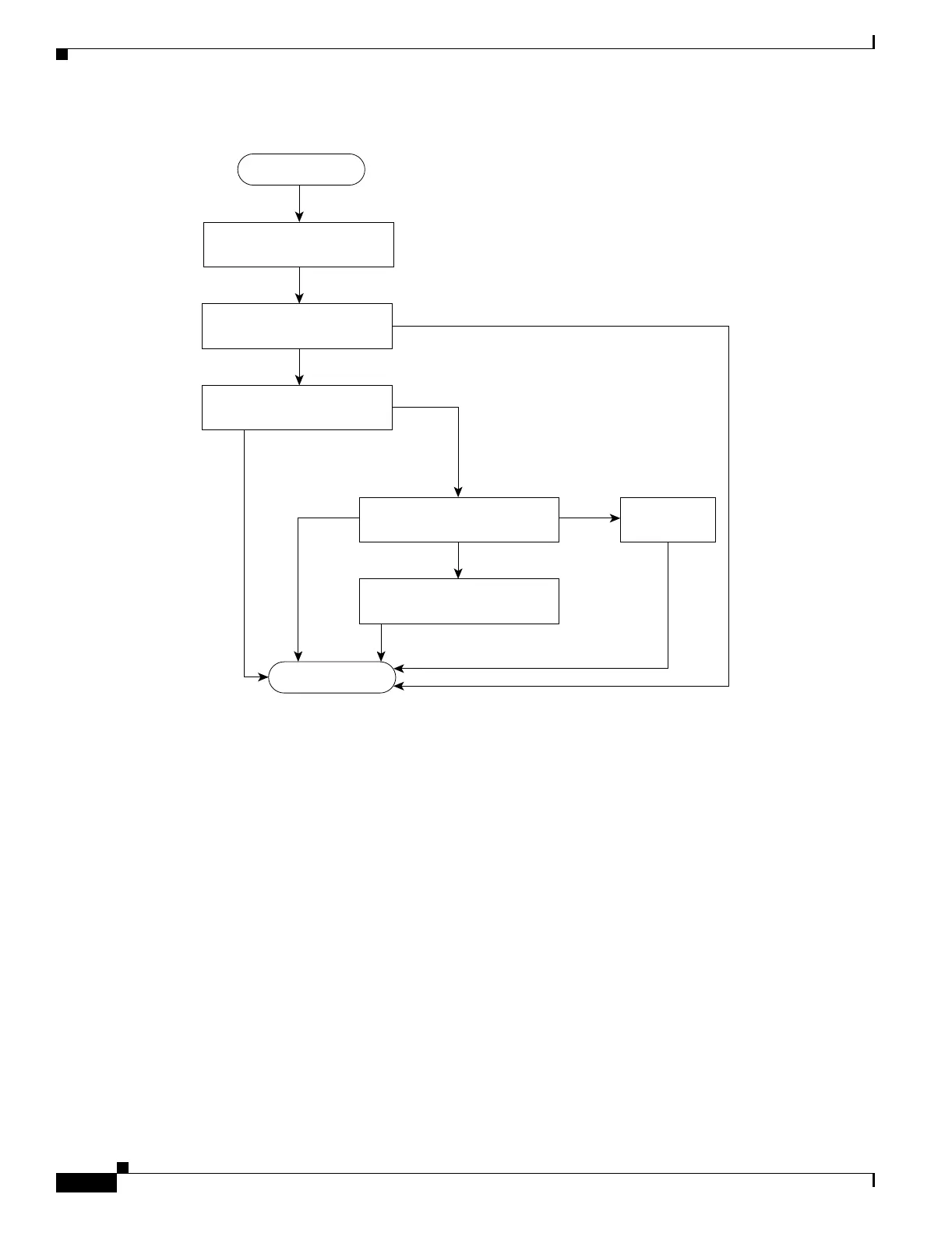29-10
Catalyst 3550 Multilayer Switch Software Configuration Guide
78-11194-09
Chapter 29 Configuring QoS
Understanding QoS
Figure 29-4 Policing and Marking Flowchart
Mapping Tables
During QoS processing, the switch represents the priority of all traffic (including non-IP traffic) with an
internal DSCP value:
• During classification, QoS uses configurable mapping tables to derive the internal DSCP (a 6-bit
value) from received CoS or IP precedence (3-bit) values. These maps include the CoS-to-DSCP
map and the IP-precedence-to-DSCP map.
On an ingress interface configured in the DSCP-trusted state, if the DSCP values are different
between the QoS domains, you can apply the configurable DSCP-to-DSCP-mutation map to the
interface that is on the boundary between the two QoS domains.
• During policing, QoS can assign another DSCP value to an IP or non-IP packet (if the packet is out
of profile and the policer specifies a marked down DSCP value). This configurable map is called the
policed-DSCP map.
• Before the traffic reaches the scheduling stage, QoS uses the configurable DSCP-to-CoS map to
derive a CoS value from the internal DSCP value. Through the CoS-to-egress-queue map, the CoS
values select one of the four egress queues for output processing.
46977
Ye s
Ye s
No
No
Pass
through Drop
Mark
Read the DSCP
of the packet.
Is a policer configured
for this DSCP?
Check if the packet is in
profile by querying the policer.
Check out-of-profile action
configured for this policer.
Drop packet.
Modify DSCP according to the
policed-DSCP map.
Start
Done

